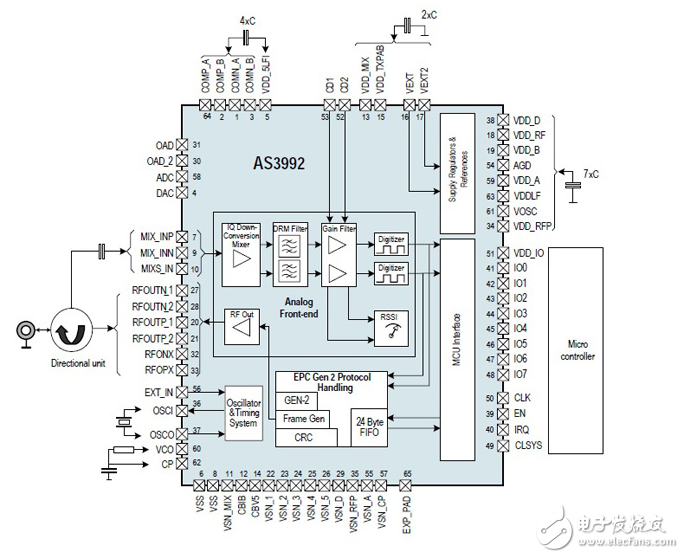
资料下载

新的RFID应用程序和解决方案提供了安全性和简单性。
新的RFID应用程序和解决方案提供了安全性和简单性。
RFID技术的使用已大大增加,因为该技术已进入许多未在初始目标列表中的应用程序。除了早期的应用如产品标识和安全访问控制的徽章,RFID技术现在进入的领域包括防伪、集装箱清单/环境监测、移动通讯(手机)、销售点(POS)终端、自动售货机、智能广告海报,和许多其他用途。
RFID系统的标准可从组织如国际标准化组织。[ 1 ]标准具体到RFID技术还可以对网站如RFID网络发现。[ 2 ]最近的一个案例,电子产品代码(EPC),是RFID解决方案的下一代产品识别。EPC是一个简单的,紧凑的“车牌”,可以唯一地识别对象(物品,箱子,托盘,地点等),以提高能见度。EPC的定义来表达各种各样的不同,现有的编号系统像GS1系统识别号,UID,VIN,及其他。

EPC is a number designed to uniquely identify every single instance of an object. For example, every jar of coffee produced will have its own unique identity. Ideally, the EPC is the only information stored on a RFID tag including an EPC Manager Number (which could be a GS1 Company Prefix), an Object Class, and a Serial Number. It is important to understand that you must be an EPC global subscriber to register EPC Manager Numbers for use in encoding EPCs on RFID tags.
Of the many applications possible for RFID, anti-counterfeiting holds a great deal of promise to prevent the reputation of pricey brand-name products from being sullied. By embedding an RFID tag into the lining of a purse, a piece of clothing, in the label of an expensive bottle of wine, or on the wristband of a watch, vendors can ensure that consumers get what they pay for rather than a fake product that does not meet the brand’s quality standards. All the store selling the item has to do is scan the RFID code to collect the data and link back to the supplier’s website to provide proof of authenticity.
声明:本文内容及配图由入驻作者撰写或者入驻合作网站授权转载。文章观点仅代表作者本人,不代表电子发烧友网立场。文章及其配图仅供工程师学习之用,如有内容侵权或者其他违规问题,请联系本站处理。 举报投诉
- 相关下载
- 相关文章





